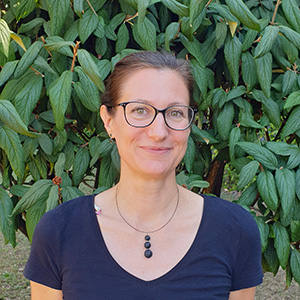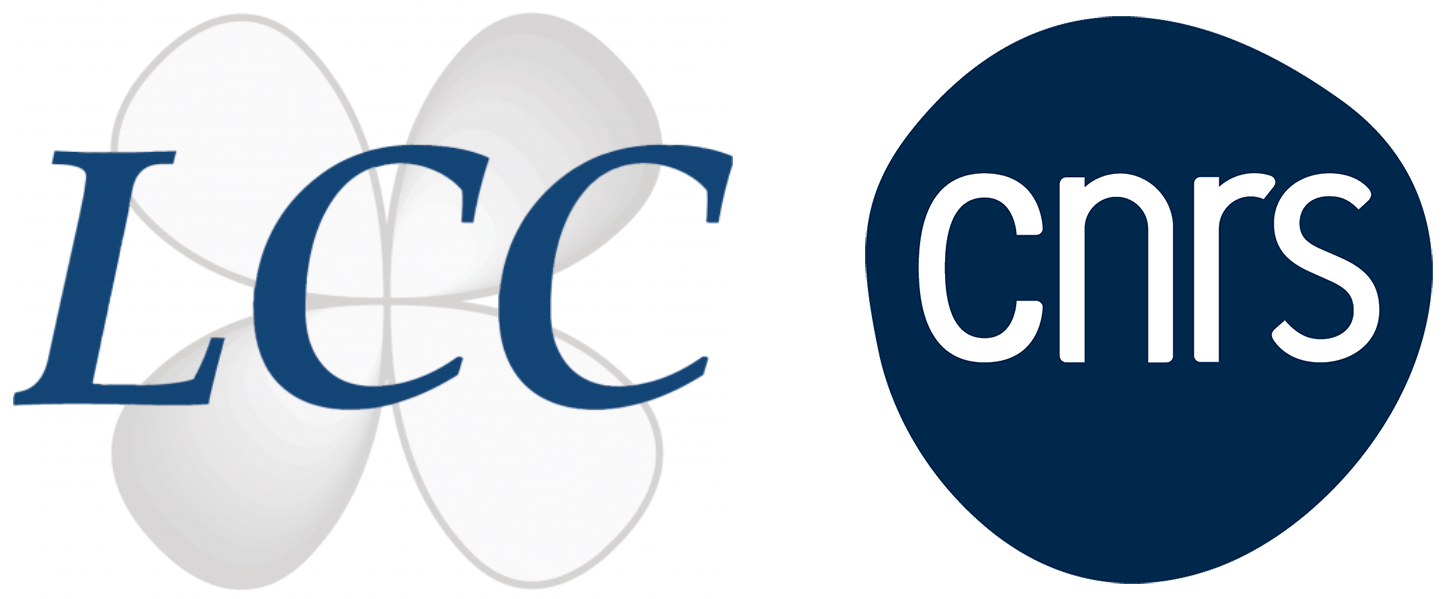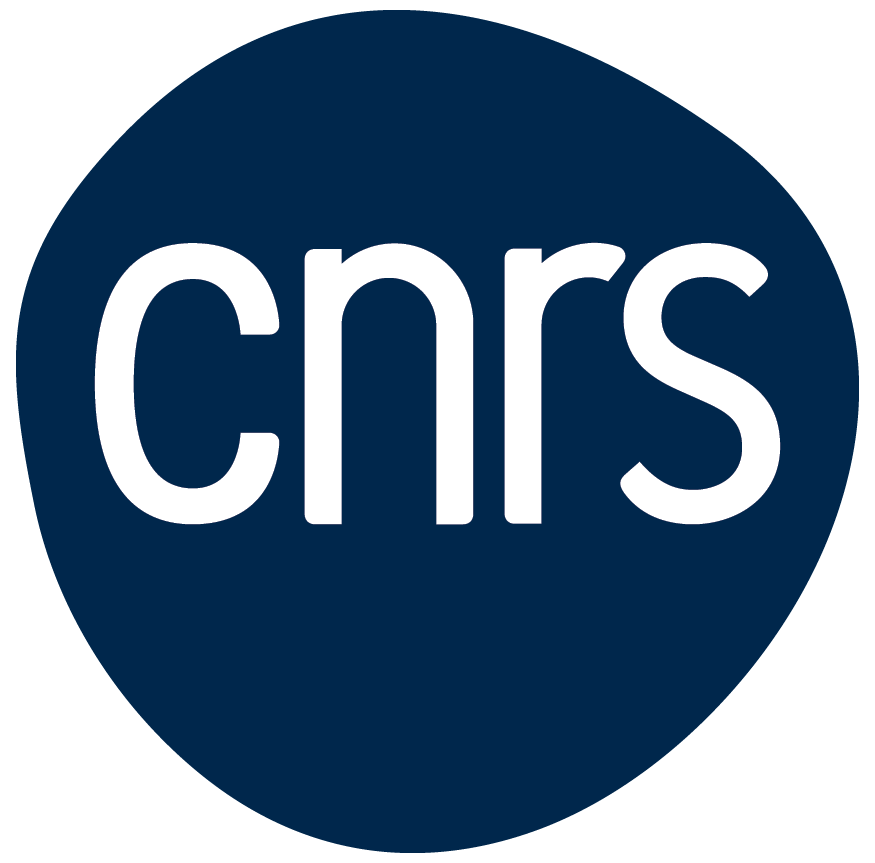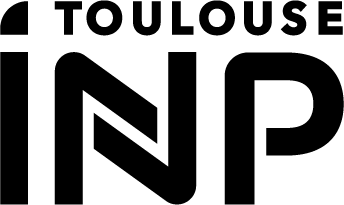LCC

Agnès LABANDE
Chargée de Recherche CNRS
Équipe G
agnes.labande(at)lcc-toulouse.fr
+33 (0)5 61 33 31 58
Numéro ORCID : 0000-0003-0192-2499
Après une thèse sur les nanoparticules d’or fonctionnalisées comme sondes redox en 2000, sous la direction du Prof. Didier Astruc (Bordeaux), Agnès Labande a effectué un postdoctorat à l’Université d’Oxford (Angleterre) de 2001 à 2003, chez le Prof. David M. Hodgson, sur des réactions énantiosélectives de cycloadditions 1,3-dipolaires catalysées par du dirhodium(II). Depuis octobre 2003, elle est Chargée de Recherche CNRS au LCC, où elle développe de nouveaux ligands NHCs et ferrocéniques pour la catalyse.
Domaines d’expertise – projets en cours
- Conception de ligands carbènes N-hétérocycliques (NHCs) fonctionnalisés : NHC-P, NHC-S, polymérisables, redox-actifs, chiraux.
- Conception de nouveaux ligands ferrocéniques, pour leur activité redox (effet redox en catalyse) ou à chiralité planaire (catalyse asymétrique).
- Catalyse de couplage C-C (Pd), d’hydrogénation (Rh(I)) et de fonctionnalisation C-H (Rh(II) et Rh(III)).
Production scientifique
- Amphiphilic Polymeric Nanoreactors Containing Rh(I)-NHC Complexes for the Aqueous Biphasic Hydrogenation of Alkenes , S. S. Sambou, R. Hromov, I. Ruzhylo, H. Wang, A. Allandrieu, C. Sabatier, Y. Coppel, J.-C. Daran, F. Gayet, A. Labande, E. Manoury, R. Poli, Catal. Sci. Technol. 2021, 11, 6811-6824.
- Oxidation-promoted synthesis of ferrocenyl planar chiral rhodium(III) complexes for C–H functionalization catalysis, J. Cabanes, C. Duhayon, C. Bijani, A. Sournia-Saquet, R. Poli, A. Labande, Mendeleev Commun. 2021, 31, 620–623.
- Phosphine/N-heterocyclic carbene palladium complex for Suzuki-Miyaura cross-coupling reactions: The role of water on activity, Y. D. Lahneche, A. Lachguar, C. Mouton, J.-C. Daran, E. Manoury, R. Poli, M. Benslimane, A. Labande, E. Deydier, Inorg. Chim. Acta 2019, 492, 91-97.
- Chiral N-heterocyclic carbene ligands with additional chelating group(s) applied to homogeneous metal-mediated asymmetric catalysis, C. Fliedel, A. Labande, E. Manoury, R. Poli, Coord. Chem. Rev. 2019, 394, 65-103.
- Synthesis of axially chiral biaryl compounds by asymmetric catalytic reactions with transition metals, P. Loxq, E. Manoury, R. Poli, E. Deydier, A. Labande, Coord. Chem. Rev. 2016, 308, 131-190.
- Contribution of heterobifunctional ligands to transition metal-catalysed C–C coupling reactions, A. Labande, E. Deydier, E. Manoury, J.-C. Daran, C. Audin, R. Poli, Turk. J. Chem. 2015, 39, 1158-1170.
- Customized Buchwald-type phosphines bearing an « inverted » pyrimidinium betaine as an aryl group surrogate – synthesis and coordination chemistry with gold(I), L. Noël-Duchesneau, N. Lugan, G. Lavigne, A. Labande, V. César, Eur. J. Inorg. Chem. 2015, 1752-1758.
- Bifunctional N-Heterocyclic Carbene Ferrocenyl Ligands – Synthesis and Palladium(II) Complexes, P. Loxq, J.-C. Daran, E. Manoury, R. Poli, A. Labande, Eur. J. Inorg. Chem. 2015, 609-616.
- A rhodium(I) dicarbonyl complex with a redox-active ferrocenyl phosphine-NHC ligand: Enhanced reactivity of the metal centre through ferrocene oxidation, N. Debono, J.-C. Daran, R. Poli, A. Labande, Polyhedron 2015, 86, 57-63.
- Tailoring Buchwald-Type Phosphines with Pyrimidinium Betaines as Versatile Aryl Group Surrogates, L. Noël-Duchesneau, N. Lugan, G. Lavigne, A. Labande, V. César, Organometallics 2014, 33, 5085-5088.
- Palladium(II) complexes with planar chiral ferrocenyl phosphane-(benz)imidazol-2-ylidene ligands, P. Loxq, N. Debono, S. Gülcemal, J.-C. Daran, E. Manoury, A. Labande, R. Poli, B. Çetinkaya, New J. Chem. 2014, 38, 338-347.
- Synthesis and characterization of half-sandwich ruthenium complexes containing aromatic sulfonamides bearing pyridinyl rings: catalysts for transfer hydrogenation of acetophenone derivatives, S. Dayan, N. Ozpozan Kalaycioglu, J.-C. Daran, A. Labande, R. Poli, Eur. J. Inorg. Chem. 2013, 3224-3232.
- Oxidation-promoted activation of a ferrocene C-H bond by a rhodium complex, A. Labande, N. Debono, A. Sournia-Saquet, J.-C. Daran, R. Poli, Dalton Trans. 2013, 42, 6531-6537.
- Rhodium(III) and Ruthenium(II) Complexes of Redox-Active NHC-Thioether Ligands, A. Labande, J.-C. Daran, N. Long, A. J. P. White, R. Poli, New J. Chem. 2011, 35, 2162.
- Palladium Complexes of Planar Chiral Ferrocenyl Phosphine-NHC Ligands: New Catalysts for the Asymmetric Suzuki−Miyaura Reaction, N. Debono, A. Labande, E. Manoury, J.-C. Daran, R. Poli, Organometallics 2010, 29, 1879.
- Chelation-Assisted Reactions of Phosphine- and Olefin-Tethered Imidazolium Derivatives and Their Affiliated N-Heterocyclic Carbenes with Roper’s Complex Ru(CO)2(PPh3)3, Benhamou, L.; Wolf, J.; César, V.; Labande, A.; Poli, R.; Lugan, N.; Lavigne, G. Organometallics 2009, 28, 6981-6993.
- Rhodium(I) Complexes of New Ferrocenyl Benzimidazol-2-ylidene Ligands: The Importance of the Chelating Effect for Ketone Hydrosilylation Catalysis, Gülcemal, S. ; Labande, A.; Daran, J.-C.; Çetinkaya, B.; Poli, R. Eur. J. Inorg. Chem. 2009, 1806-1815.
- Reactivity of phosphane-imidazolium salts toward [Ir(COD)Cl]2: preparation of new hydrido iridium(III) complexes bearing abnormal carbenes, Wolf, J. ; Labande, A.; Daran, J.-C.; Poli, R. Eur. J. Inorg. Chem. 2008, 3024-3030.
- Nickel(II), Palladium(II) and Rhodium(I) Complexes of New NHC-Thioether Ligands: Efficient Ketone Hydrosilylation Catalysis by a Cationic Rh Complex, Wolf, J. ; Labande, A.; Daran, J.-C.; Poli, R. Eur. J. Inorg. Chem. 2007, 5069-5079.
- New 1,1′- and 1,2-Disubstituted Ferrocenyl Phosphine-Diaminocarbene Ligands: Synthesis, Rh(I) Complexes, Labande, A.; Daran, J.-C.; Manoury, E.; Poli, R. Eur. J. Inorg. Chem. 2007, 1205-1209.
- Aryl Grignard cross-coupling of aryl chlorides catalysed by new, highly active phosphine/imidazolium nickel(II) complexes, Wolf, J.; Labande, A.; Natella, M.; Daran, J.-C.; Poli, R. J. Mol. Catal. A: Chem. 2006, 259, 205-212.
- One-pot Cross-Metathesis/Tandem Carbonyl Ylide Formation–Intramolecular Cycloaddition of an unsaturated 2-diazo-3,6-diketoester, Hodgson, D. M.; Angrish, D.; Labande, A. H. Chem. Commun. 2006, 627-628.
- Nickel(II) complexes with bifunctional phosphine–imidazolium ligands and their catalytic activity in the Kumada–Corriu coupling reaction, Wolf, J.; Labande, A.; Daran, J.-C.; Poli, R. J. Organomet. Chem. 2006, 691, 433-443.
- Catalytic enantioselective intermolecular cycloadditions of 2-diazo-3,6-diketoester-derived carbonyl ylides with alkene dipolarophiles, Hodgson, D. M.; Brückl, T.; Glen, R.; Labande, A. H.; Selden, D. A.; Dossetter, A. G.; Redgrave, A. J. Proc. Nat. Acad. Sci. 2004, 101, 5450-5454.
- Catalytic enantioselective intermolecular cycloadditions of a 2-diazo-3,6-diketoester-derived carbonyl ylide with alkyne and strained alkene dipolarophiles, Hodgson, D. M.; Labande, A. H.; Glen, R.; Redgrave, A. J. Tetrahedron: Asymmetry 2003, 14, 921-924.
- Extended Scope of Dirhodium(II)-Catalysed Enantioselective Intramolecular 1,3-Dipolar Cycloadditions of Carbonyl Ylides with Alkene and Alkyne Dipolarophiles, Hodgson, D. M.; Labande, A. H.; Pierard, Françoise Y. T. M. Synlett 2003, 59-62.
- The Scope of Catalytic Enantioselective Tandem Carbonyl Ylide Formation-Intramolecular [3 + 2] Cycloadditions, Hodgson, D. M.; Labande, A. H.; Pierard, F. Y. T. M.; Exposito Castro, M. A. J. Org. Chem. 2003, 68, 6153-6159.
- Supramolecular Gold Nanoparticles for the Redox Recognition of Oxoanions: Syntheses, Titrations, Stereoelectronic Effects, and Selectivity, Labande, A.; Ruiz, J.; Astruc, D. J. Am. Chem. Soc. 2002, 124, 1782-1789.
- Development of Dirhodium(II)-Catalyzed Generation and Enantioselective 1,3-Dipolar Cycloaddition of Carbonyl Ylides, Hodgson, D. M.; Stupple, P. A.; Pierard, F. Y. T. M.; Labande, A. H.; Johnstone, C. Chem. Eur. J. 2001, 7, 4465-4476.
- Colloids as redox sensors: recognition of H2PO4- and HSO4- by amidoferrocenylalkylthiol-gold nanoparticles, Labande, A. ; Astruc, D. J. Chem. Soc., Chem. Commun. 2000, 1007-1008.
- Recognition of the dihydrogenophosphate anion on a gold electrode derivatized with an amidoferrocenylalkylthiolate ligand, Alonso, E. ; Labande, A. ; Raehm, L. ; Kern, J.-M. ; Astruc, D. C. R. Acad. Sci., Series IIC 1999, 2, 209-213.
- Enantioselective Palladium Catalyzed Allylic Amination Using New Chiral Pyridine-Phosphine Ligands, Constantieux, T.; Brunel, J.-M.; Labande, A.; Buono, G. Synlett 1998, 49-50.
- Enantioselective palladium catalyzed allylic substitution with new chiral pyridine-phosphine ligands, Brunel J.-M. ; Constantieux, T. ; Labande, A. ; Lubatti, F. ; Buono, G. Tetrahedron Lett. 1997, 38, 5971-5974.
Chapitres d’ouvrages:
“Chiral N−Heterocyclic Carbene−Based Ligands” V. César, C. Fliedel, A. Labande, in Chiral Ligands: Evolution of Ligand Libraries for Asymmetric Catalysis, M. Diéguez (Ed.), CRC Press, 2021, ISBN 9780367428488, pp 195−232.
« Cycloadditions of carbonyl ylides derived from diazocarbonyl compounds » D. M. Hodgson, A. H. Labande, S. Muthusamy, Organic Reactions, Denmark S.E. (Ed.), John Wiley & Sons: Hoboken, 2013, vol. 80, pp. 133-496.
Partenariats
Cliquez pour voir nos collaborations
Nationales :
- Philippe Dauban (ICSN, Gif-sur-Yvette), ligands ferrocéniques redox-actifs pour la catalyse d’amination C-H au dirhodium(II), ANR CHamRhOx (2019-2023).
- Vincent César (LCC, Toulouse) : ligands NHCs monodentes, crédits récurrents.
Internationales :
- Süleyman Gülcemal (Ege University, Izmir, Turquie): ligands NHCs polymérisables, catalyse dans des nanoréacteurs de type cœur-coquille.
LCC CNRS
Laboratoire de chimie de coordination du CNRS
205 route de Narbonne, BP 44099
31077 Toulouse cedex 4
France




